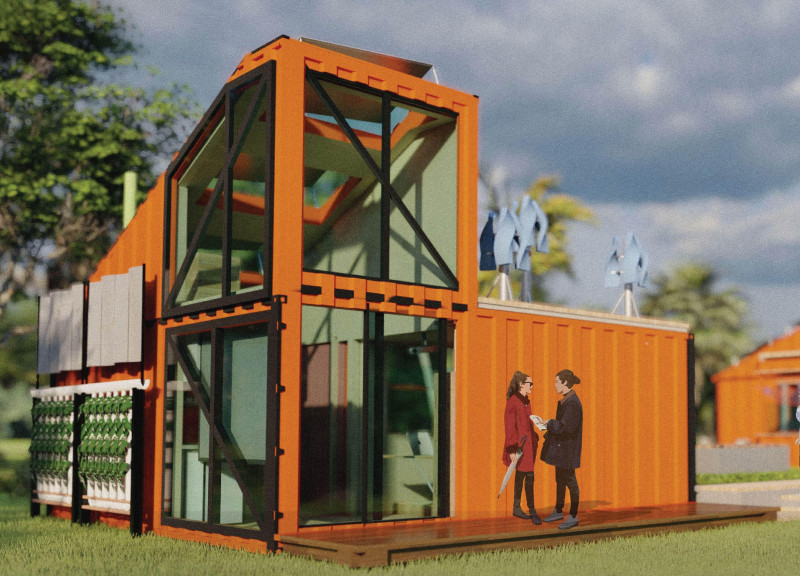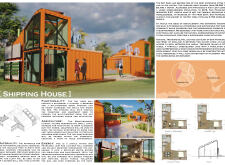5 key facts about this project
The tiny home community on Treasure Island is designed to meet the growing need for affordable housing in the Bay Area, located conveniently between San Francisco and Oakland. The project emphasizes efficient living spaces that encourage community engagement and sustainability. It combines essential residential areas within a compact layout, aiming to create a sense of belonging for its residents.
Functionality and Layout
The design incorporates a bathroom, kitchen, bedroom, and a multi-purpose room into efficient living spaces. This layout maximizes the available area while ensuring that each room serves a specific function. Storage options are cleverly placed along walls and under beds, allowing the space to be organized and accessible without feeling cramped. The multi-purpose room can transform easily from a dining area to a place for relaxation or work.
Sustainability and Community Gardens
At the heart of the design is a focus on sustainability, which is evident in the inclusion of community gardens and an aquaponics system. This system encourages local food production and helps create a sustainable ecosystem by using fish waste to fertilize crops. Community gardens not only provide food but also foster social interaction, allowing residents to share responsibilities and build connections with one another.
Material Choices and Construction Elements
The materials chosen for construction prioritize environmental sustainability. Recycled wood serves as the primary flooring material, reinforcing the commitment to reducing waste. Additionally, PVC and cloth will be used for garden walls and fog catchers. These fog catchers are designed to capture moisture from the environment, which will be used in a recycled water system for irrigation. This process further supports the project's goal of sustainability.
Technological Integration and Energy Efficiency
The project also includes sun and wind turbines to enhance self-sufficiency. These renewable energy sources contribute to the overall energy needs of the community. By integrating technology that focuses on energy efficiency, the community does more than just provide housing; it supports a lifestyle that respects the environment and promotes responsible usage of resources.
Each home in the community is designed to connect with its surroundings, allowing residents to interact with nature and contribute to sustainable practices. The design encourages a lifestyle that values sustainable living while providing practical housing solutions. This community is not only intended to address the housing crisis but also to foster a shared sense of responsibility among its residents.



















































